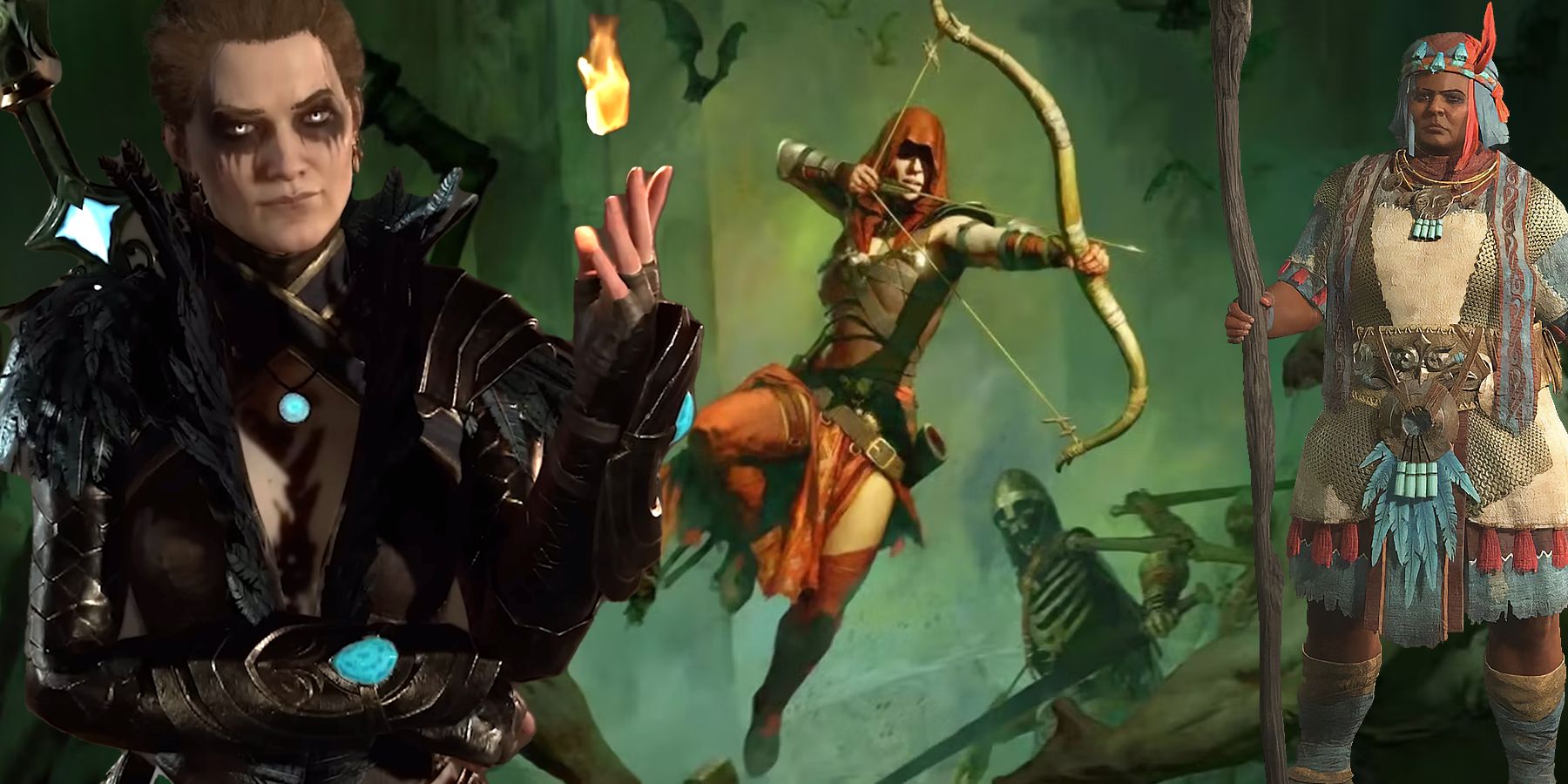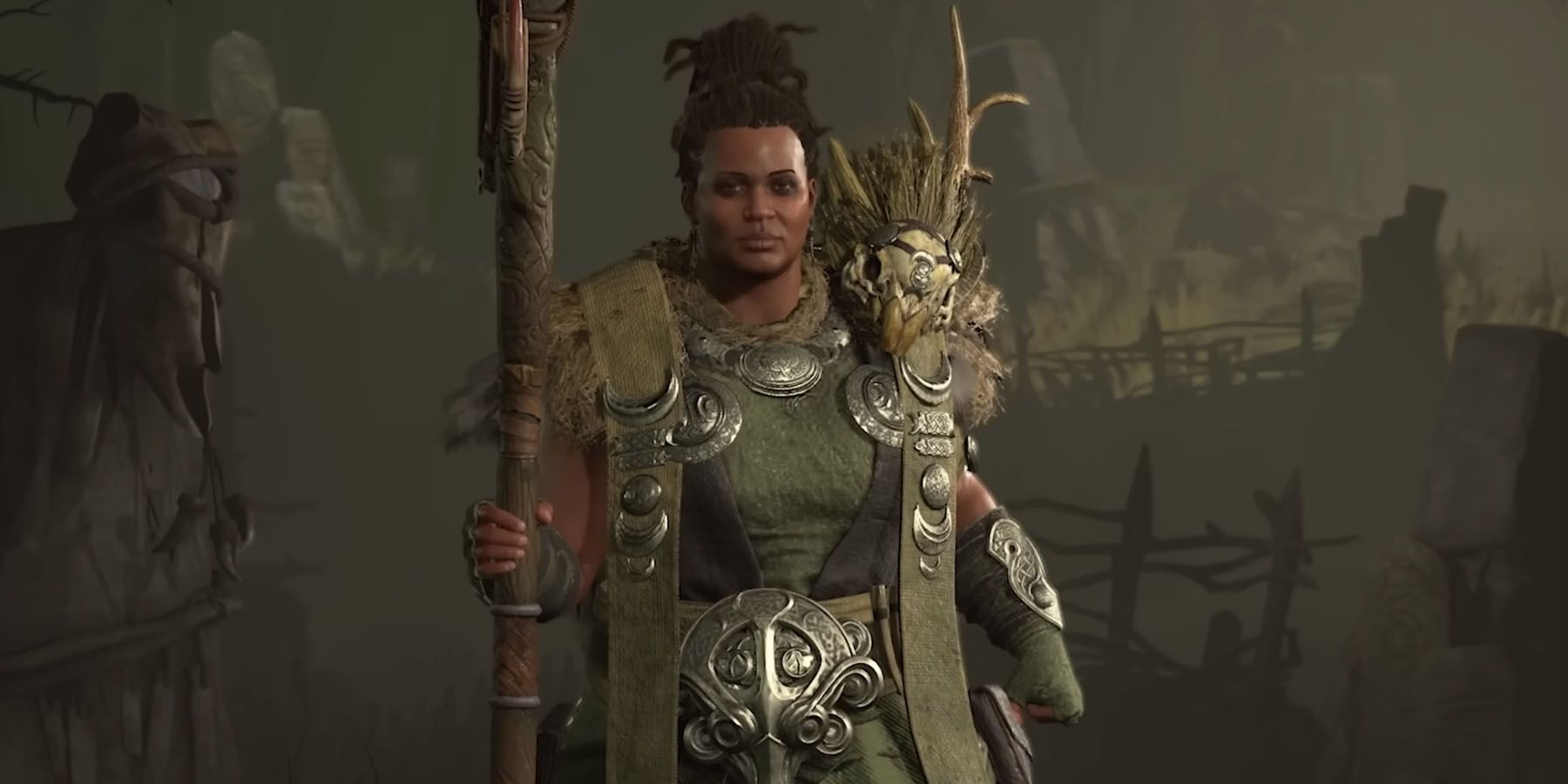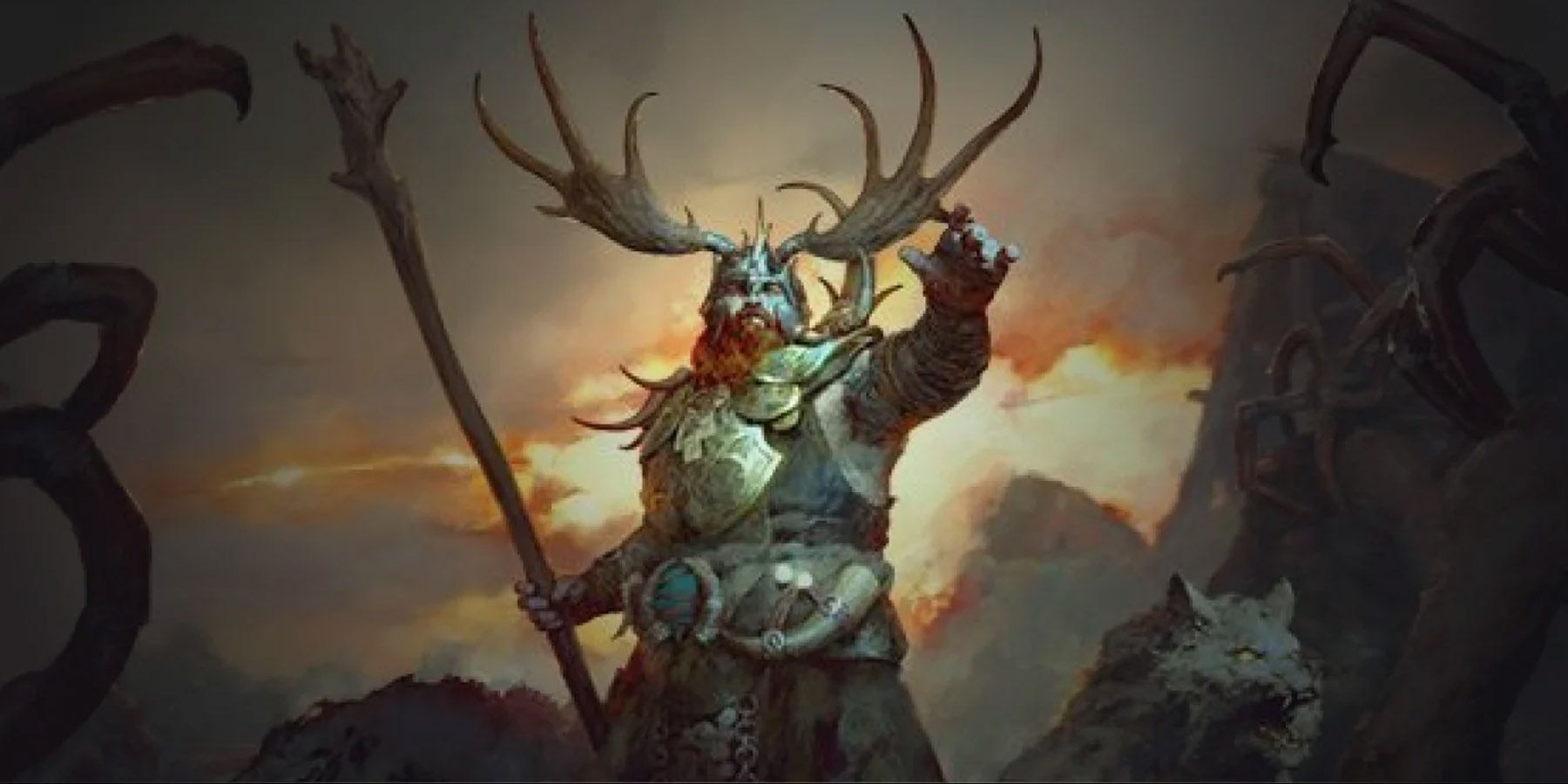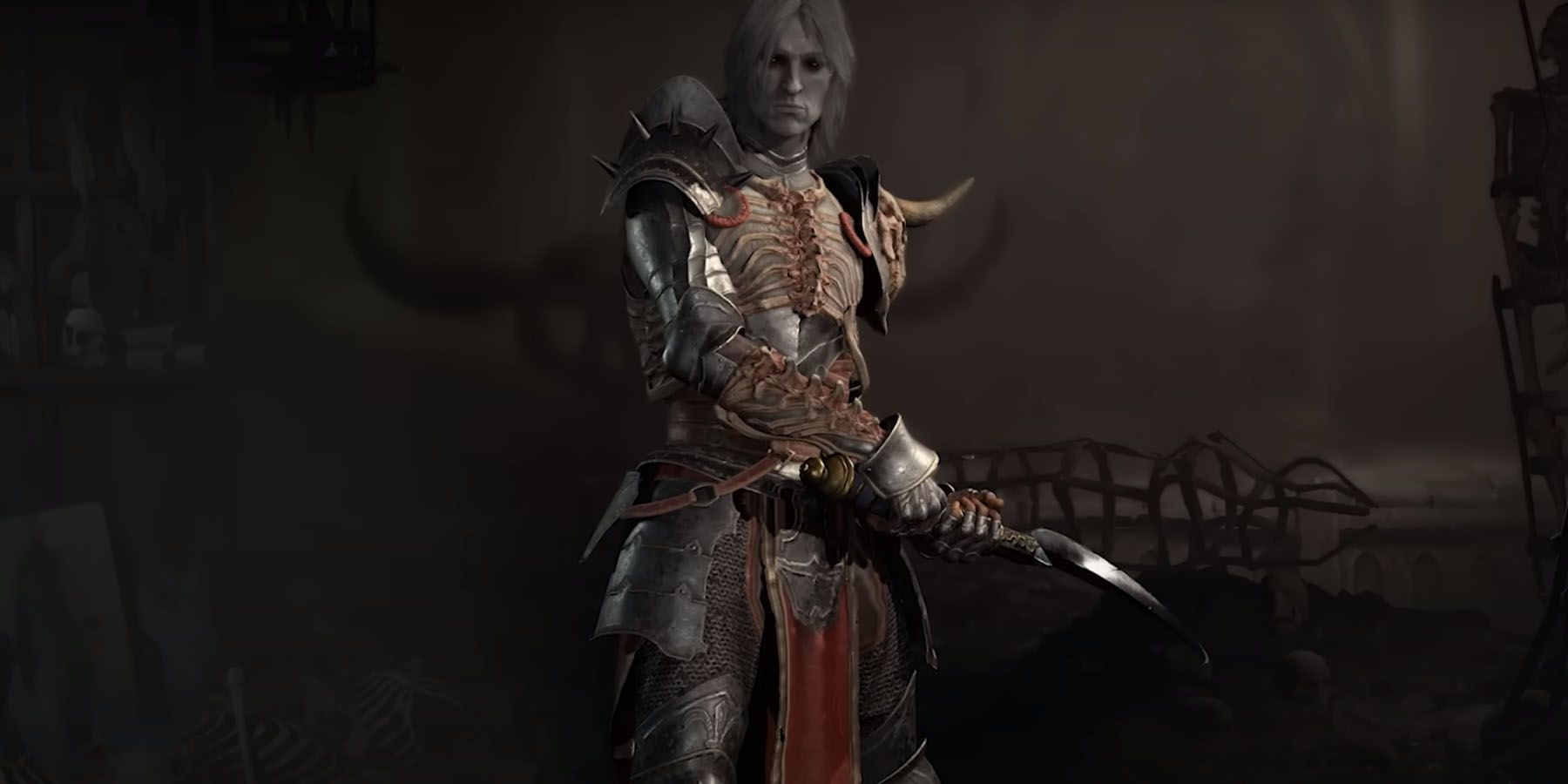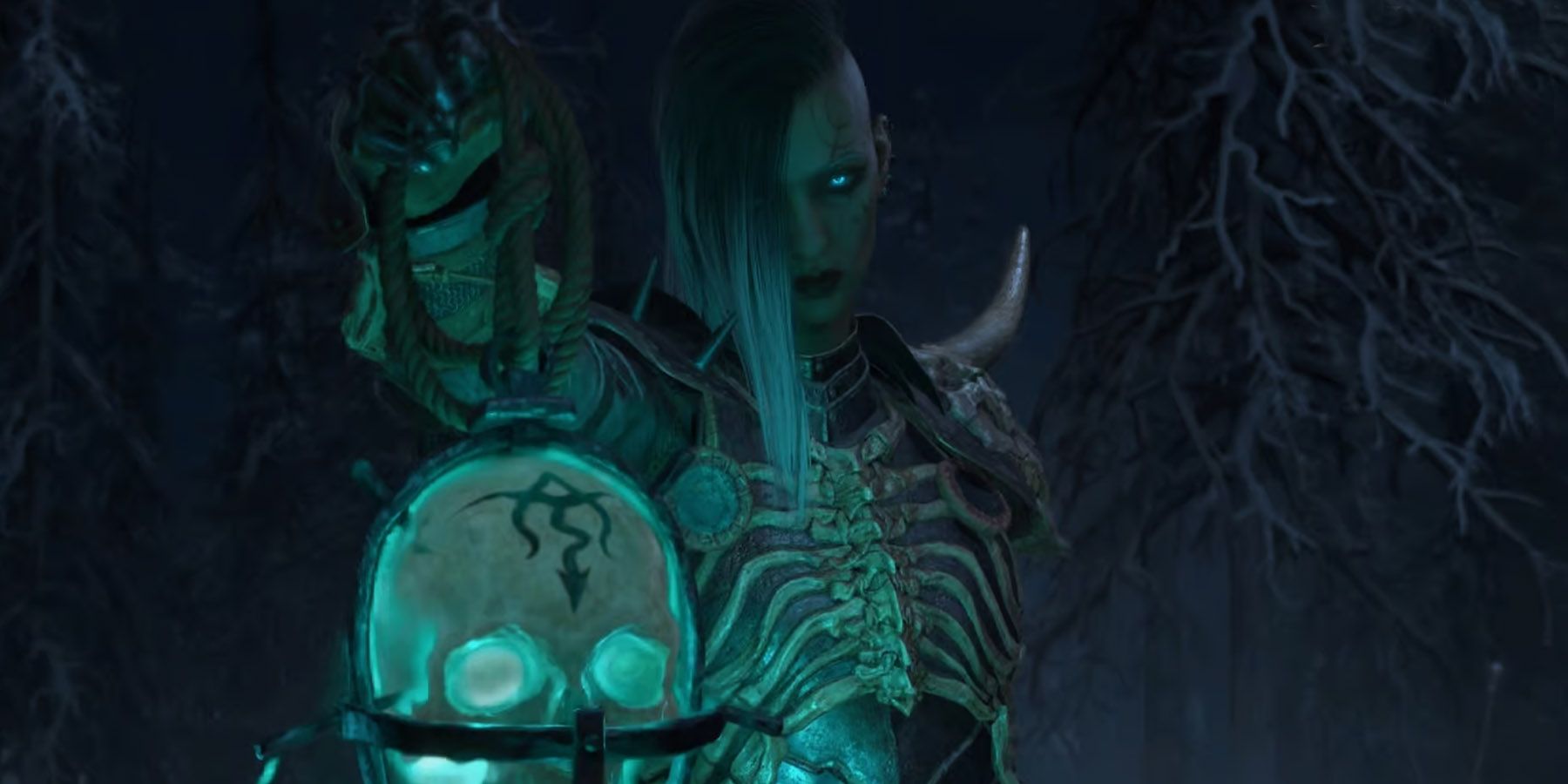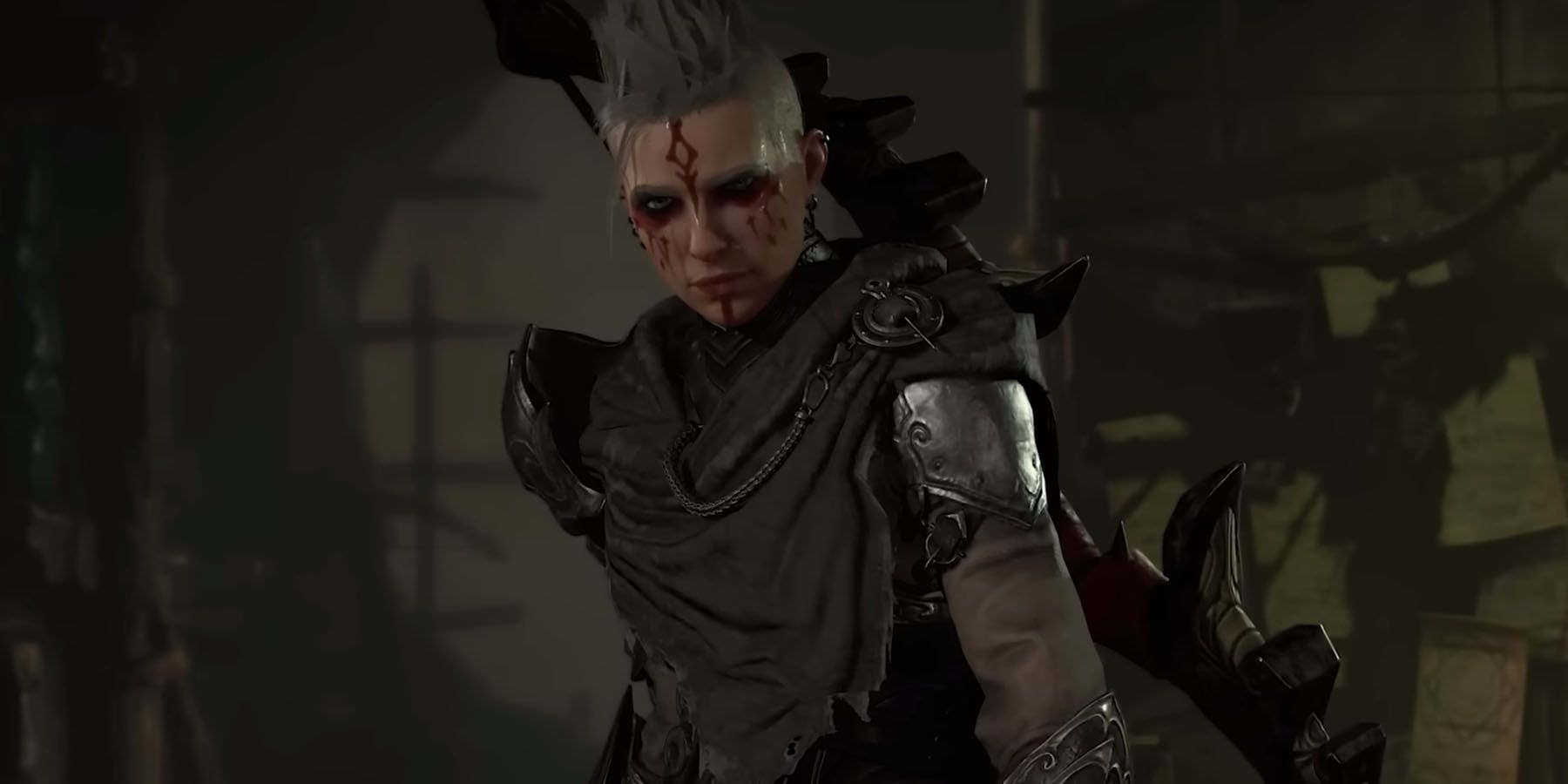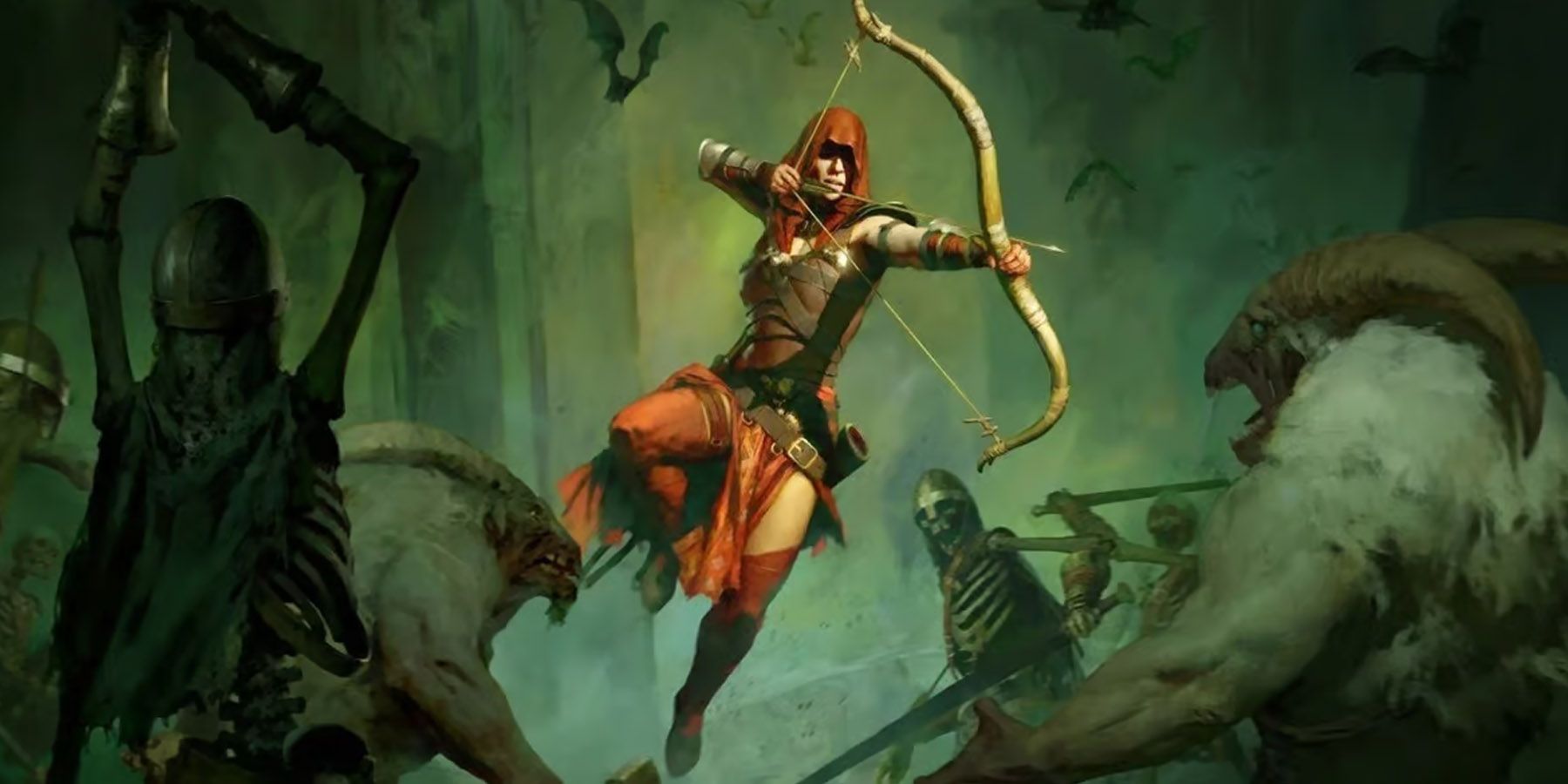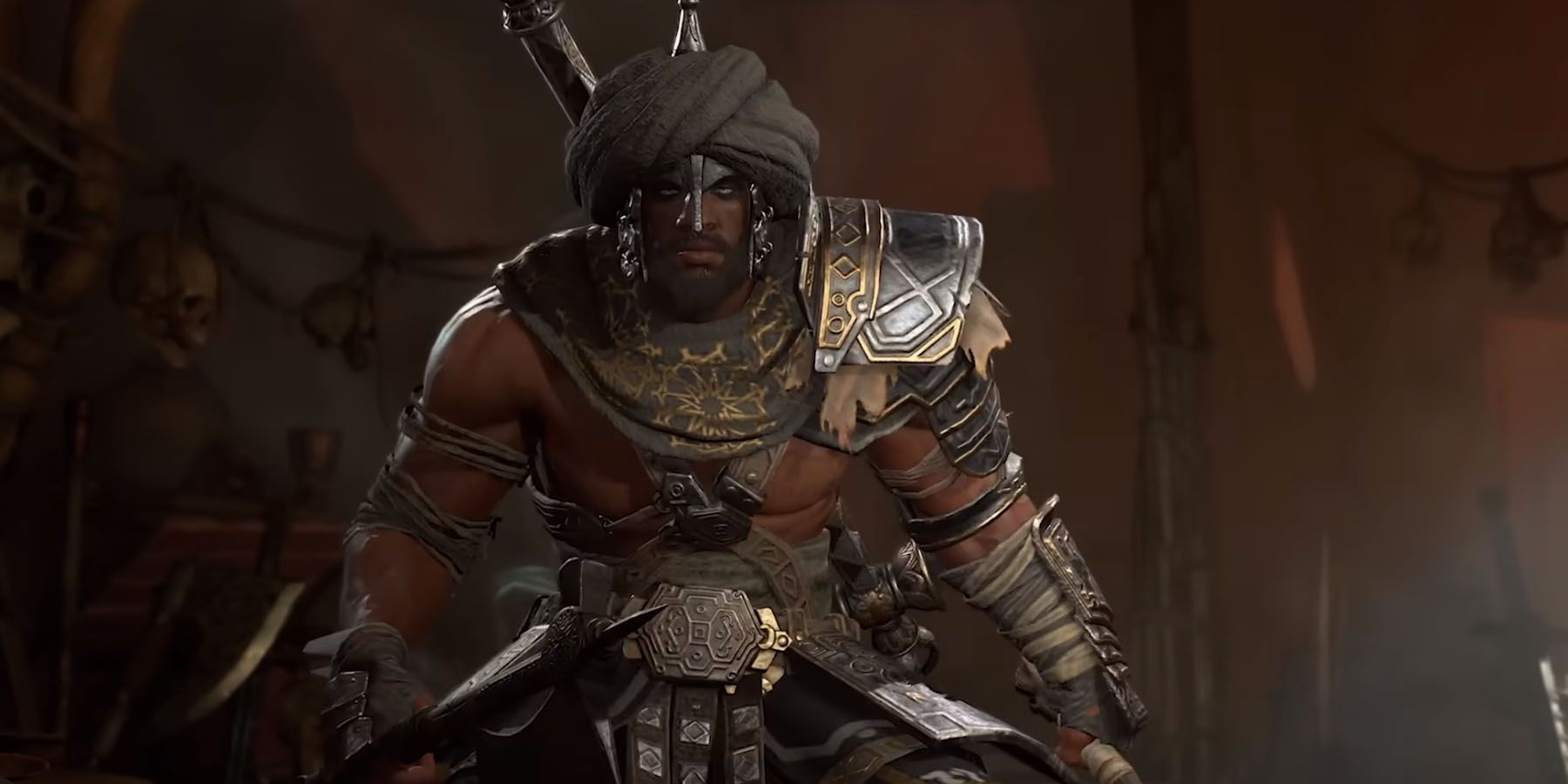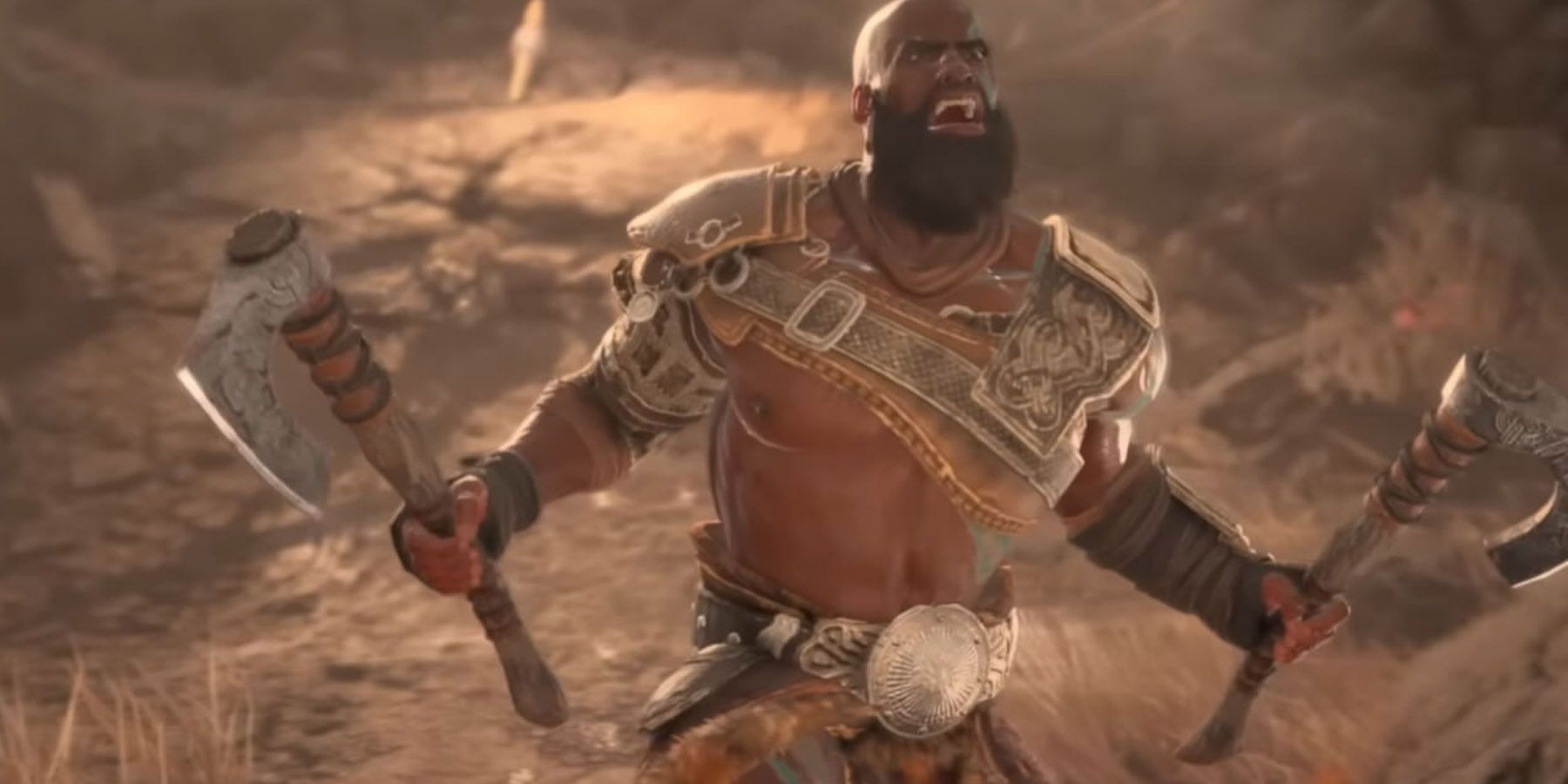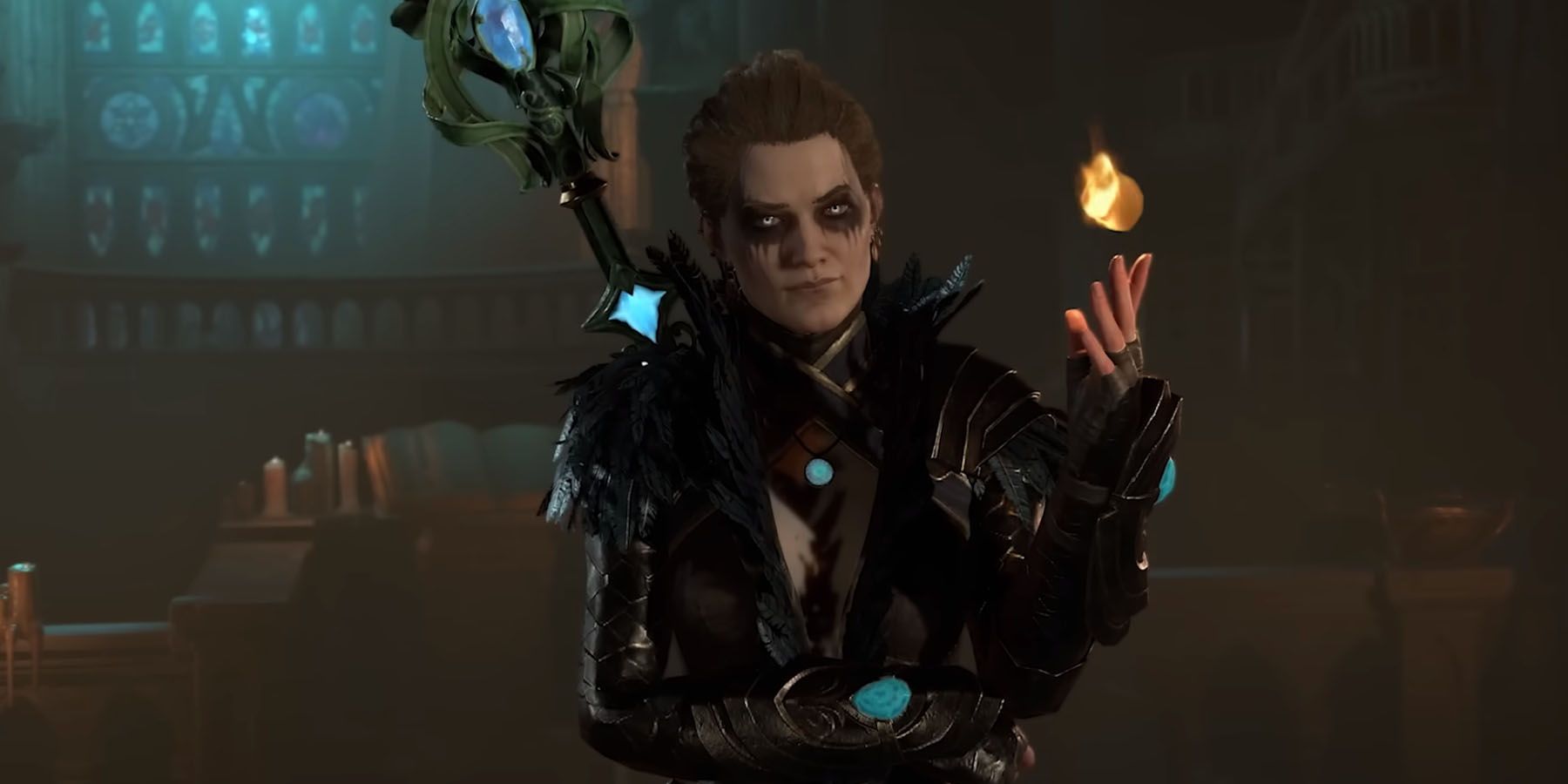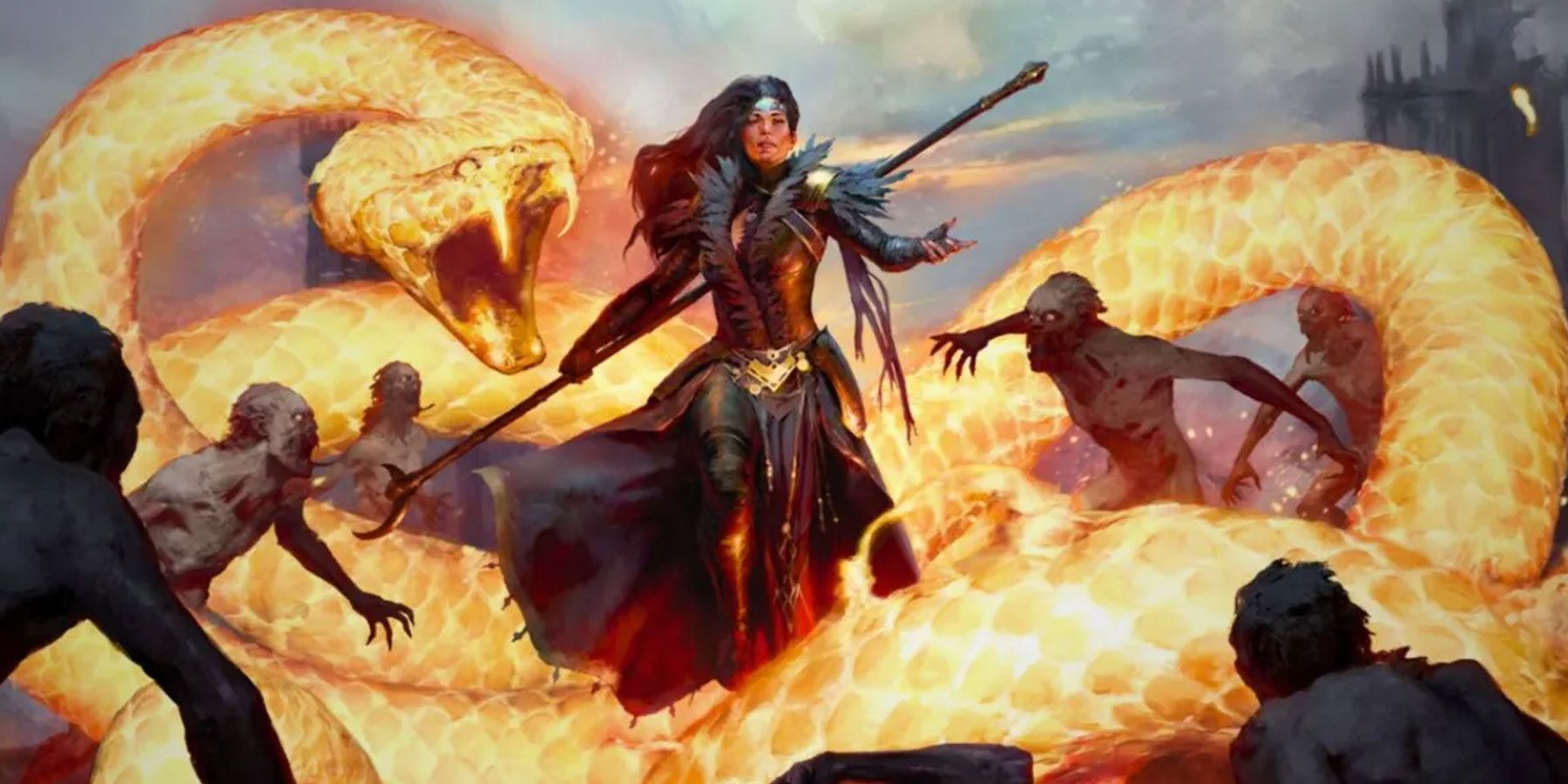Highlights
- Break from the usual ARPG experience in Diablo 4 with intense PVP battles in the Fields of Hatred for top loot.
- Explore the diverse classes and builds in the game to find the most effective strategies for PVP dominance.
- Stay updated with Season 4 changes in Diablo 4 to optimize your class for PVP combat and adapt to the evolving meta.
Players who want to take a break from fighting Lilith’s forces in Diablo 4 may relish in the fight for supremacy in the Fields of Hatred, the site of the Diablo game’s PVP mode. Unlike the usual ARPG experience of the Diablo franchise, PVP in the Fields of Hatred is a fierce struggle between empowered forces of Hell and Sanctuary’s best fighters. Here, players can acquire some of the game’s best loot if their builds can withstand the relentless assault of Diablo 4 opponents.
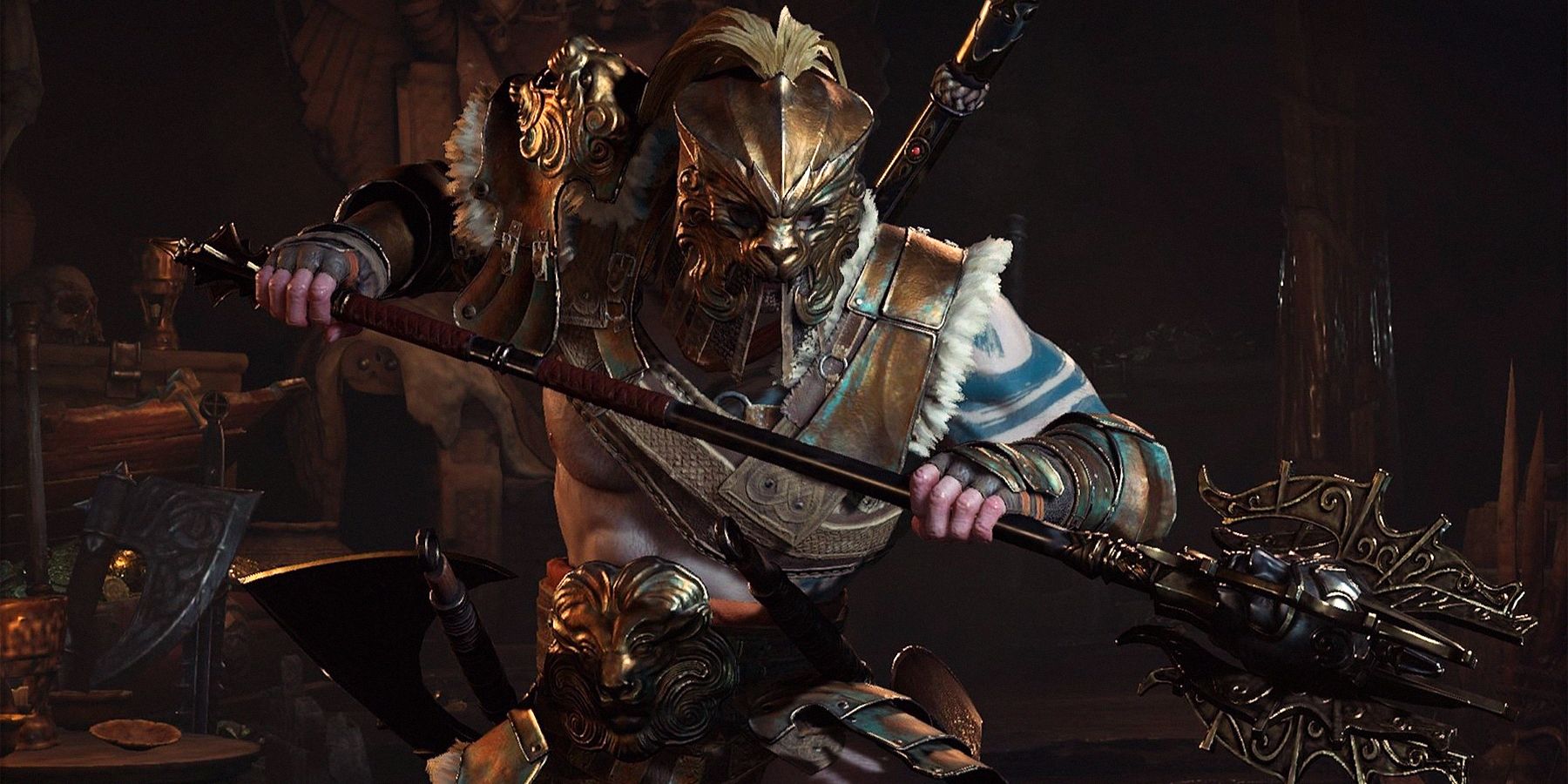
Diablo 4: The Best Place to Farm Gold
Gold is a little hard to come by in Diablo 4, but there are some farming spots that can help solve any monetary woes players might be having.
With the game having released five starting Classes with extremely customizable kits, players have a myriad of ways they can try to contend in the Fields of Hatred. However, players looking for the most ideal builds in PVP may want to check how each of the game’s Classes adapts to aggressive player-killing strategies.
Updated on June 5th, 2024, by Rhenn Taguiam: Now that Season 4: Loot Reborn transforms Diablo 4’s gear and loot system into a more involved mechanic in the ARPG”s overall gameplay, fans of the title might notice their favorite Classes transforming into more modifiable and flexible characters - especially courtesy of new crafting options such as Tempering, Masterworking, and Greater Affixes. With these new mechanics being released alongside Class changes, fans of Diablo 4 might notice that certain Classes now affect PVP dynamics in different ways. In this regard, fans might want alternatives to other popular builds for their duels with other opponents, as well as see how Season 4’s new gameplay mechanics have affected each Class’s viability for PVP combat. With that in mind, this list has been updated to rarrange the classes to fit the current meta, and provide more PVP-suitable builds for each of them.
Druid: Shapeshifting Battering Ram
Despite a rather weak start at launch, the Druid rises as one of the most heavy-hitting Classes in the Diablo 4 experience. The Druid offers a violent middle ground between the glass cannon Sorcerer and their aggressive brethren among the Barbarian, especially with Forms that transition between utility-centric Human, tanky Werebear, and fierce Werewolf. Their only perceivable weakness is running out of steam against Barbarians that thrive in near-death situations, especially when the latter gets past the Druid’s defenses.
While other Classes often rely on ultra high-speed and high-damage PVP builds, just the Werebear’s innate tankiness alone cements the Druid’s status as a tank contender while the Werewolf capitalizes on sheer offense. Adjustments in Season 4 have provided the Druid with easier access to more tailor-fit builds, such as the Werebear Pulverize for AOE punishments as well as Shred for burst damage. Moreover, the Druid’s PVP efficiency has to do with maximizing core mechanics that give them a life buffer (Fortify), reducing enemy Life based on their maximum (Crushing Blow), or boosting damage taken by enemies (Vulnerable).
Druid PVP Considerations
- Natural defenses: On top of the shapeshifted Druid’s sheer damage potential are opportunities to transform them into defensive juggernauts, which are further enhanced by nifty Druid Passives. Players can do this through Life restored per Spirit used in Earth/Storm skills (Natural Balance) and plain damage reduction boosts (Ancestral Fortitude, Heightened Senses, Iron Hide). Not to mention, the Werebear has a natural shielding ability via Fortify (Maul), boosting their defenses further.
- Damage incentives: Unlike other Classes that receive a flat damage increase, the Druid can have these benefits stack through proper rotations. For instance, players can enjoy increased Criticals and next-skill damage during shapeshifts (Feral Spirit, Quickshift). They can also boost their damage when attacking nearby enemies (Predatory Instinct), as well as when using Earth and Storm abilities (Natural Resonance, Fury of Nature, Earthen Might) on Vulnerable (Elemental Exposure, Perfect Storm) foes and Crushing Blow (Primal Resonance) sufferers.
- Crowd control punishers: High-speed PVPs make crowd control slows a viable threat, with the Druid’s kit enabling them to dish out various CCs on certain conditions. These include skills having a chance to reduce attack speed (Debilitating Roar), Immobilize (Earthbind), Stun (Petrify, Trample), and Knockback (Cataclysm, Boulder, Cyclone Armor) nearby enemies. Druids even have a nifty anti-CC Unstoppable that also Absorbs damage (Earthen Bulwark), with an accompanying Unstoppable Werebear Ultimate (Grizzly Rage).
- Crowd control boosts: Druids also have the means of improving their crowd controls, punishing enemies further. These include Earth skills having a chance to Immobilize enemies (Earthbind), a base damage boost to CC’d enemies (Scent of Blood), an improved flat Knockdown chance on hit against Slowed enemies (Overpower), and a base increase to CC duration (Undergrowth).
Suggested PVP Druid Build: Trampling Landslider
Despite being both a pseudo-spellcaster and a sub-tank, the Druid of Diablo 4 still relies on a player’s technical prowess to ensure it outlasts enemies in the game. In the case of PVP, the Nature Druid uses the Class’s magical affinity to stop opponents in their tracks. Tapping into certain Aspects (Trampled Earth, Subterranean) guarantees massive extra damage (Landslide) via an Unstoppable knockback (Trample) and Poisons (Poison Creeper). Defenses are guaranteed via an HP Barrier (Earthen Bulwark), damage reduction (Storm Strike), and additional knockbacks (Cataclysm).
Suggested PVP Druid Build: Poison Companion Domination
Season 4’s adjustments to itemization and upgrades have become a boon to Druids, especially those who realize that Companions now scale with gear. In this regard, a Werewolf Druid with Poison Companion Domination can easily overwhelm opponents with high mobility, spreading AOE, and Poison, leaving enemies more vulnerable for the Wolf Companions to eliminate. Being a Companion-dependent build, players need to be extra aggressive with their Poison Creeper and Rabies for Poisons - something made more possible through speed gains via Bestial Rampage.
Necromancer: Blood And Bone Decimation
Maintaining a reputation for being one of the most technical Diablo Classes, the Necromancer in Diablo 4 rewards players who master its PVP potential with massive damage numbers. This becomes more evident with the 2024's Season 4 rework, as the Necromancer can enjoy more summon-related perks - particularly the Book of Dead’s Minions being more proactive in combat. Aside from this, players can now activate Golem even when CC’d to become Unstoppable, the Army of the Dead boosting the spawn rate of Volatile Skeletons, Inspiring Leader (Passive) giving both the Necromancer and their Minions extra Critical Strike Chance, and Kalan’s Edict giving Minions extra Attack Speed per active fellow Minion.
Moreover, players can work around a non-summon Necromancer with pure damage kits. Necromancer PVP builds can capitalize on Fortified/Overpower-enhanced Blood Surge with Barrier-based Bone Storm for massive bursts. Bone Spirit can be paired with Bone Spear for standard nuking, while the latter can be replaced with Corpse Explosion (Corpse) for AOE. Players need to remember to balance these attack-heavy kits with the proper use of Blood Mist or Bone Prison, especially if they want exits against tougher foes.
Necromancer PVP Considerations
- Bones ramp up combat damage: As with other Necromancer incarnations, their Bone spells dish out decent AOE on top of the potential to control the battlefield. Large burst attacks include a skeletal entity chasing a target before exploding (Bone Spirit) and a whirlwind of bones (Bone Storm). When upgraded, Bone spells can cost more Essence for bigger DPS (Imperfectly Balanced), deal higher damage via Vulnerable (Initiate’s Blood Splinters, Supernatural Bone Spear, Evulsion), have higher crit chance (Serration), and reduce CDs on certain resource caps (Compound Fracture)
- Defenses add control: Protective measures in the Necromancer’s kit can dictate the flow of battle, such as enemy cages that need to be destroyed separately (Bone Prison), a CC-breaking speed boost with healing (Blood Mist), and even buffs that make enemies deal less damage up close (Death’s Embrace). In Diablo 4 team play, the lack of hard defenses may allow the Necromancer to focus on a more combat-heavy role.
- Bloody sustains: The Necromancer becomes a devastating foe at AOE with the right Blood kit, especially with synergized spells. While Hemorrhage and Blood Lance are typical multi-hit attacks, Blood Wave (Ultimate) comes with a nifty Knockback and Slow. The potency of Blood spells may even extend to sustains, such as Fortified health shields (Initiate’s Hemorrhage, Supernatural Blood Surge, Drain Vitality) and even Life siphons (Enhanced Blood Surge). Some Passives may even improve heals at lower Life (Gruesome Mending) and boost damage at higher health (Coalesced Blood, Tides of Blood).
- To Summon or not to Summon: While the Book of the Dead facilitates Summons to improve the Necromancer’s overall firepower, PVP’s innate lack of corpse generation still works to the advantage of the Necromancer. With Sacrifice, the Necromancer can block their summons to receive permanent buffs that can improve a more straightforwardly aggressive build, such as buffs against Vulnerable foes (Cold Mage), improved Shadow Damage (Skeletal Reapers), increased Max Essence (Shadow Mage), and boosted Max Life (Blood Golem).
Suggested PVP Necromancer Build: Blood Lancer
Unlike the Diablo Necromancer stereotype of having minions do the dirty work, the Diablo 4 Necromancer taps into viscous blood to eliminate opponents. This high DPS Blood Lancer powerhouse enjoys consistent bursts via Overpower as well as a constant supply of HP via Blood Orbs (Hemorrhage) and heals (Blood Mist). Key to the build is Blood Lance, which should clear single-target foes with ease. Necromancers with this build also enjoy boosted defense with the occasional damaging defense (Bone Storm) and damage reduction (Decrepify).
Suggested PVP Necromancer Build: Minion Spotlight
The changes to Season 4 for the Necromancer have made the Minion Spotlight a more viable build for players, especially when Minion defenses have been given a significant boost, while Kalan’s Edict can dramatically increase Attack Speed. Since projectiles from Shadow Mages now pierce through opponents, their buffs can obliterate foes much faster - especially when players pair their Minion waves with a constant barrage of Shadow attacks.
Rogue: Speed Burst Entourage
What the Rogue lacks in magical prowess they make up for with deadly efficiency with an assortment of weapons. In turn, Diablo 4 gameplay for the PVP Rogue relies heavily on speed to jump the gun on opponents. They carry over their high burst damage in PVE over to PVP, with CC-breaking Unstoppables (Concealment, Shadow Step) being options to use on the offense. Mobility makes the Rogue rather annoying to fight, but their lack of defenses means getting caught by a tankier Class like the Barbarian or Druid may be game over for them.

Best Ranged Weapons In Diablo 4, Ranked
Players who prefer to deal damage from afar in Diablo 4 should keep their eyes peeled for these great ranged weapons.
Changes in Season 4 gave Rogues more chances of being battle-ready against their fellow Classes, but they still need some hyper-optimization to perform up to a player’s expectations. Among buffs include boosting Stun Grenade effects, a full Inner Sight providing much-needed Critical Strike Chance, and Victimize (Passive) becoming easier to proc. Rogues may even spice things up further with Imbuements, with Poisons taking full advantage of the Fields of Hatred’s DOT boosts. Dash remains a nifty repositioning tool, while Shadowstep is an emergency CC-break to gain distance.
Rogue PVP Considerations
- Punishing strikes: A Rogue's weapon of choice may be tailor-fit with benefits that change their combat styles. Going up close with Cutthroat (swords, daggers) can boost damage reduction and movement speed (Momentum), whereas scoring crits with Marksman (bows, crossbow) paves the way for even more crits. Attacking opponents in melee can increase Attack Speed and boost damage against CC'd foes (Close Quarters Combat), while being Trap-reliant may Stun enemies and reduce Trap CDs further (Exposure).
- Poison is king: Among available Imbuements, Poison Imbuement is the most punishing in PVP due to the Fields' DOT boosts. On top of Upgrade 2 having a chance of applying double the Poison damage, some parts of the Rogue's kit dispense Poison rather liberally. For instance, up to four Poison Traps can not only Knockdown opponents (Enhanced) but may even reset Imbuement CDs (Upgrade 1). Passives can amplify Poison damage (Deadly Venom), make enemies deal less damage (Debilitating Toxins), and boost the Rogue's Attack Speed per Poisoned foe (Alchemical Advantage).
- Shadow flexibility: Shadows add a bit of flair to the Rogue's arsenal, with Shadow Imbuement not only granting explode-on-kill to enemies but also making opponents they hit become Vulnerable (Upgrade 1). Passives also enhance the performance of Shadow damage with a chance to Stun (Shadow Crash) and Energy regen (Consuming Shadows). Players may even create a Death Trap (Ultimate) that may pull enemies inwards (Enhancement) for an opening to burst AOE, while Shadow Clone (Ultimate) is a weaker Rogue decoy that copies all the player's moves.
- Rush in and out of combat: A Rogue's combat efficiency is tied to how fast they move around the battlefield. When defending, they can stop enemies from using skills via Daze (Smoke Grenade), build distance with Slows (Caltrops), or inflict damage reduction via Shadows (Dark Shroud). On the offense, Rogues can rush opponents up close (Dash) or even punish CCs via Unstoppable (Concealment, Shadowstep). Some Passives also offer movement benefits, such as increased damage at a set distance (Impetus), Energy regens when moving (Adrenaline Rush), boosting Dodge chance when using skills (Agile), and getting health when Stealthed (Mending Obscurity).
Suggested PVP Rogue Build: Twisting Assassination
While the Rogue of Diablo 4 can rely on the safety of distance to secure AOE damage, its ever-reliable Twisting Blades can be the basis of a single-target punisher in PVP. With this build, the Rogue can count on massive burst (Twisting Blades) damage that dishes out damage even on mid-range (Puncture) and explodes enemies on death (Shadow Imbuement). To maintain aggression, the Rogue can reposition quickly (Dash, Concealment), with the occasional combat re-entry with a fierce opening (Shadow Step).
Suggested PVP Rogue Build: Penetrating Shot Sniper
An alternate take on the Rogue’s PVP potential would be the Penetrating Shot Sniper, a build specifically designed to deal high damage with AOE - specifically with Improved Penetrating Shot and Fundamental Heartseeker to boost DPS via criticals. Concealment provides much-needed Unstoppable, while Poison Trap can slightly delay opponents for players to retreat and regroup. Among Passives, Exploit is specifically tailored towards maximizing Penetrating Shot’s effects, while Trap Mastery boosts Critical Strike Chance against CC’d and Vulnerable foes.
Barbarian: Rage Is The Answer
What makes the Barbarian one of the deadliest PVP Diablo Classes is its accessible toolkit, since enemies become punching bags as soon as Barbarians close in on them. Straightforward is key here, as the Barbarian’s damage-heavy skills emphasize pummeling opponents to death before they get to strike back. In turn, much of the Barbarian’s Fury Skills become the centerpiece of PVP builds, with Hammer of the Ancients alone being usually enough to finish enemies with the right buffs.
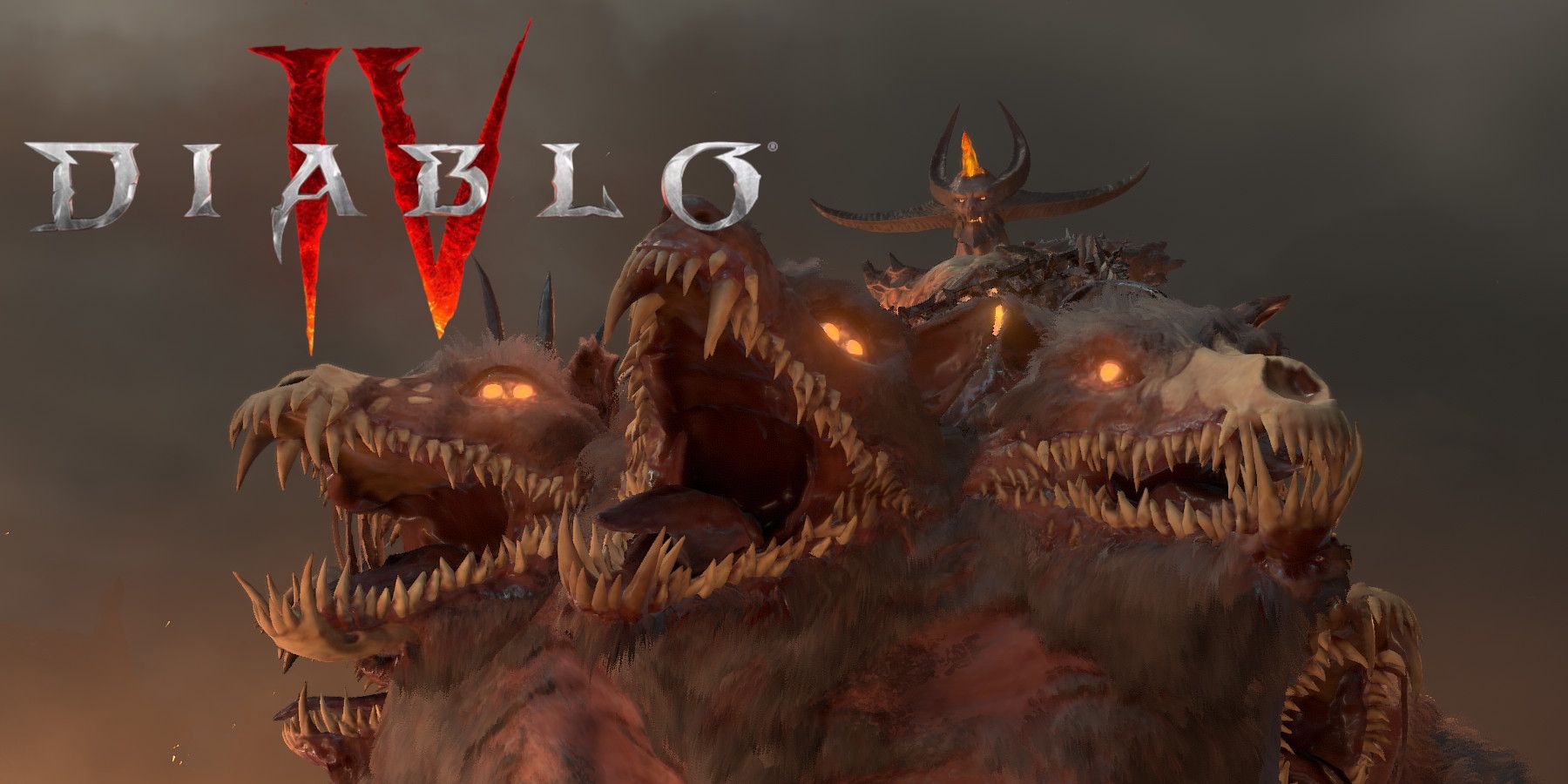
Diablo 4: All Side Quests in Scosglen (and Which Require a Stronghold)
There are more than 40 side quests in Diablo 4's region of Scosglen, and some have amazing rewards worth going out of the way for.
As 2024’s Season 4 rework removed the Barbarian’s innate 10-percent damage reduction, the Class has become more vulnerable in terms of overall tankiness. Their DPS also receives slight tweaking, as Violent Rend boosts damage versus Vulnerable foes, the first hit from Rupture guarantees an Overpower, while Unbridled Rage provides less bonus damage. The Barbarian still retains their penchant for hyper-aggressive plays, but their lesser defensive options mean players need to be extra wary of their builds.
Barbarian PVP Considerations
- Boost damage: The Barbarian’s damage-heavy kit can be improved further with both the right skills and talents. Barbarians who want damage over time can rely on Rupture (Weapon Mastery), Rend (Fury), and Blood Thirst (Passive Talent) for circumstantial Bleed. Likewise, Walking Arsenal (Ultimate Passive) can boost the Barbarian’s overall damage whenever they use different weapons.
- Get up close and personal: Despite the Barbarian being a melee Class, they do have Brawling Skills that control their playstyles at any range. Depending on a Barbarian’s needs, they can generate distance (Kick) or zoom unto targets who prefer to stay from afar (Leap, Charge). Likewise, they can even pull enemies to close the gap (Primal Axe). To punish foes even further, Barbarians can increase their damage up close (War Cry) or even temporarily Sow nearby enemies (Concussion).
- Stay in the fight: The Barbarian’s already-tanky kit is made even tougher with his Defensive Skills. Their nifty CC-immune Unstoppable (Rallying Cry) can help Barbarians power through stuns, with an alternate option (Unstoppable Force) offering the same thing with a damage boost upon Berserking.
- Get a free revive: What makes them ridiculously powerful is Undying Rage, which is essentially a free revive if the Barbarian kills an enemy within five seconds after taking fatal damage. Timing this perfectly can score a clutch win in PVP.
Suggested PVP Barbarian Build: Bleed Berserker
A common trope associated with the Diablo Barbarian is their capability to pummel opponents to death quickly with massively powerful strikes. The Bleed Berserker does a bit of the opposite, as the build instead relies on damage-over-time via Bleed (through Flay, Rend) to slowly whittle their Health before bursting them (Rupture) close to their doom. The Barbarian can get more damage during prolonged Berserks, which can then lead to stronger finishers with short CDs (Iron Maelstrom, Death Blow).
Suggested PVP Barbarian Build: Double Swing Execution
Despite adjustments to the Barbarian for Season 4, Double Swing Execution maintains itself as quite an efficient build for the frontline Class. This build relies on setting up Double Swing as a meat tenderizer, mostly by stunning foes via Berserk and then proccing Dust Devils by unleashing Double Swing fast enough via Battle Frenzy. A Furious Double Swing combined with Warrior’s Death Blow can effectively extend Berserking for players, paving the way for even more damage options.
Sorcerer: Elemental Destruction
While the high-risk, high-reward gameplay of Sorcerers makes them as fragile as they are powerful in Diablo 4, players of the Diablo sequel in tune with their spellcaster’s playstyle can transform them into PVP juggernauts. Moreover, Season 4 changes also made Fire Bolt, and fire spells in general, more viable sources of DPS to eliminate foes in a more consistent manner.
Other changes in Season 4 made the Sorcerer more tactically viable, such as Teleport’s Enhanced and Mystical variants granting extra Movement Speed and 500% increased damage, respectively, while Incinerate provides extra baseline Damage Reduction during its channel time. Flame Shield also enjoys a larger base burning radius. Addition of new gear and easily-customizable toolkits can make Fire-based builds more brutally efficient, offering a fiery alternative to fans who want to burn their enemies to submission.
Sorcerer PVP Considerations
- Crowd control finesse: Chill effects leading up to Freeze give Sorcerers access to two CC effects in a single spell: low movement speed (Chilled) and stuns (Frozen). The majority of their Cold kit capitalizes on this mechanic, courtesy of spells such as Frost Bolt, Frozen Orb, Ice Blades, Frost Nova, and Blizzard. On top of damage-boosting Sorcerer Passives, these spellcasters can boost Chill dealt per attack (Cold Snap), buff damage against Chilled and Frozen foes (Frostbite, Chill to the Bone), and reduce damage taken from affected enemies (Numbing Cold).
- Big damage options: True to their nature as glass cannons, Sorcerers have multiple bread-and-butter offensive spells. Usual combos in PVP include an insta-Freeze (Frost Nova) followed by Hydra (Fire), Ice Shards (Cold), or Nova (Lightning), all of which can be buffed further with stackable damage-boosting Passives such as Precision Magic, Inexorable Reach, and Frostbite.
- Concentrated damage: Sorcerers already dish out immense damage with AOE-heavy Lightning spells and Burning-inducing Fire spells, but they become much deadlier in tandem with mechanic-enhancing Passives. For instance, players can further enhance Burning with flat DOT increase (Endless Pyre) and increased Fire damage (Conflagration). Likewise, Lightning can get more combat effects such as improved Mana regen (Overcharge), Stun chance (Convulsions), enemy damage reduction (Stagger), and higher damage on melee (Lightning Mastery).
- Anti-crowd control defenses: Protections available to the Sorcerer get them out of pesky situations, with Teleport and Conduit not only generating distance but also breaking crowd control. They can also alternate between anti-CC with self-AOE (Flame Shield) or no-CD damage absorption (Ice Armor), as well as a 4-second Immunity with Chill (Deep Freeze). When timed properly, a Sorcerer can have spammable defenses with Elemental Attunement (Passive) that reduces CD of Defensvie Skills (Teleport, Flame Shield) with criticals.
Suggested PVP Sorcerer Build: Ice Shard Madness
Slowing frost cements the capacity of an Ice Shard Sorcerer when it comes to major damage in this Class’s Diablo 4 arsenal. If the Sorcerer isn’t slowing enemies down (Blizzard, Frost), it outright Freezes them (Frost Nova) on their tracks. Afterward, they can finish them off with Ice Shards or retreat to a more defensible position via mobility skills (Teleport) or a nifty shield (Ice Armor). This build showcases the Sorcerer’s capacity to outpace and outlast opponents with Vulnerability effects while maintaining her defenses via Slowing skills.
Suggested PVP Sorcerer Build: Blazing Fire Bolt
Thanks to changes in Season 4, the Blazing Fire Bolt has become a more viable build for Sorcerers. Key to this specific build would be the more targetable Glinting Fire Bolt and the widespread Firewall with Inner Flames, Devouring Blaze, and Crippling Flames. Enhancing the build would be Teleport, Frost Nova, and Flame Shield for extra utility and DPS although Deep Freeze with Soulfire, Endless Pyre, and Fiery Surge can also complement a Shimmering Flame Shield. Combustion’s extra damage towards Burning effects can make this build a dependable source of DOT against foes, especially with continuous proccing.
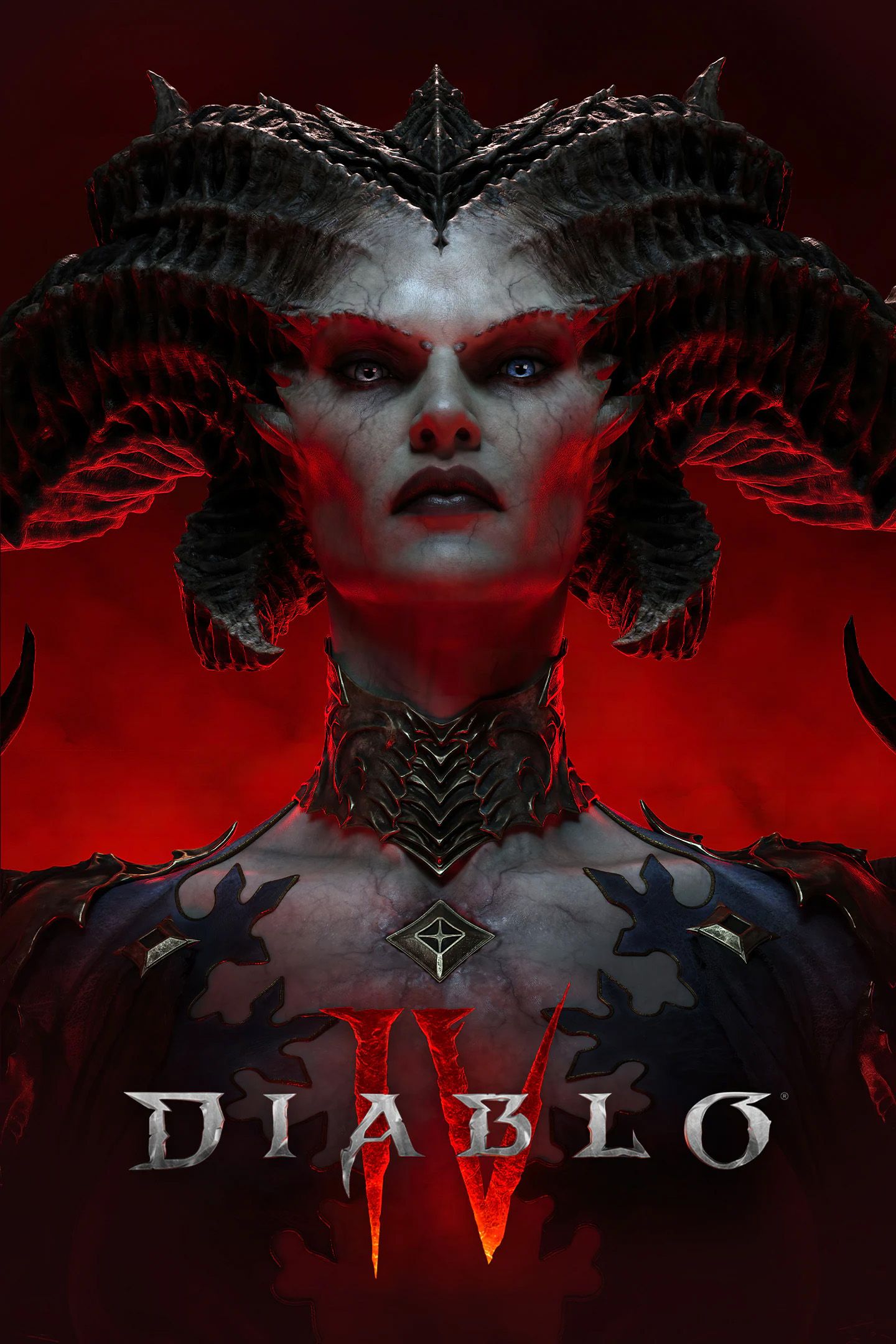
Diablo 4
- Platform(s)
- PC , PS4 , PS5 , Xbox One , Xbox Series X , Xbox Series S
- Released
- June 6, 2023
- Developer(s)
- Blizzard
- Genre(s)
- Action RPG , Hack and Slash

